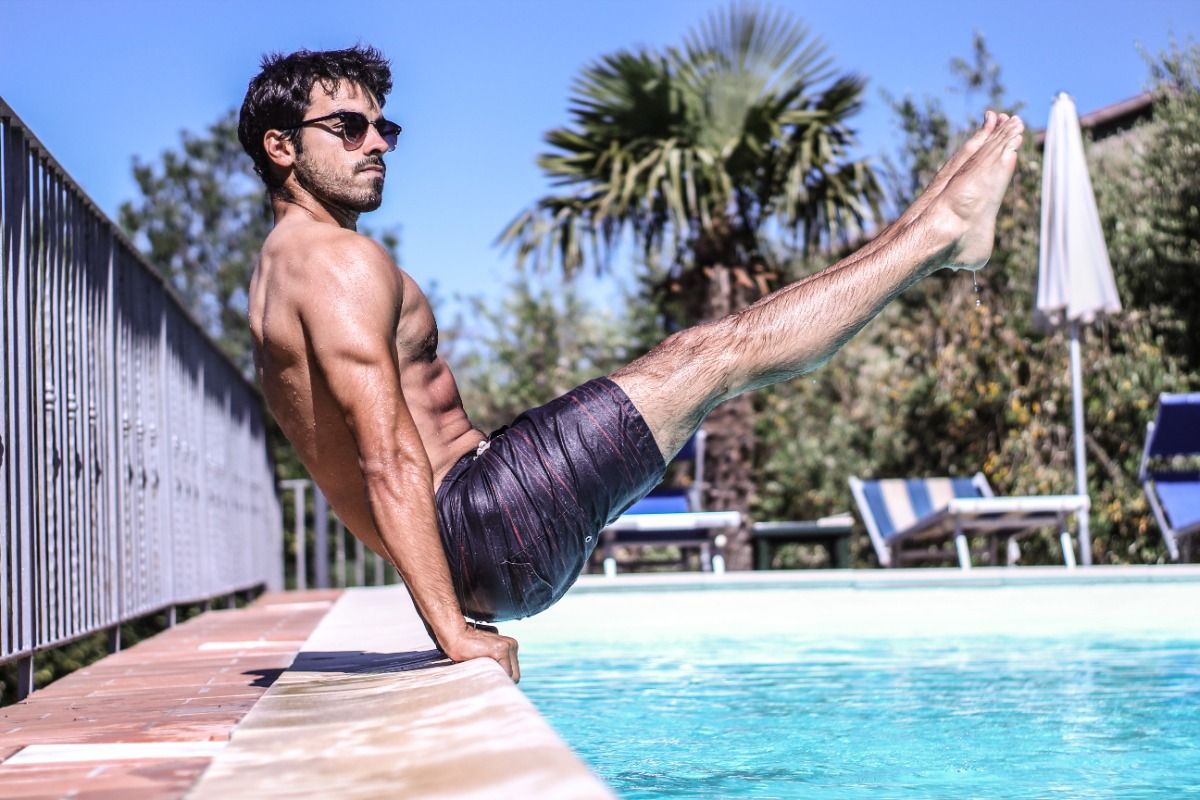
Calisthenics are exercises that rely solely on a person’s body weight for resistance and require little to no equipment. If you’re at the beach and you suddenly decide you want to do a beach workout, you could start doing calisthenics right there in the sand. Squats, push-ups and jumping jacks are all examples of calisthenics. All you need is your body, and enough energy to start working out.
These exercises are done in a variety of intensities and rhythms. Calisthenics help with strength training, muscular endurance, flexibility, and coordination.
Calisthenics burn calories very efficiently, which may help with weight loss and body fat reduction. Performing calisthenics typically requires a lot of mobility and energy, which your body obtains through calorie burn. If you burn more calories than you consume, you will lose weight.
Many people enjoy calisthenics because it can be done outdoors in nature, with no equipment. Perhaps you’ve grown bored of the gym and you need a change of scenery? Maybe you’ve grown tired of hitting the same workout machines over and over? If this sounds familiar, then incorporating calisthenics into your workout routine might be beneficial.
Examples of Calisthenics

Calisthenics workouts are rapid and require you to move the majority of your body. Athletes, military personnel, law enforcement, people practising martial arts and even those doing home exercises all use calisthenics for daily fitness. Depending on your fitness level, you should repeat each movement at least 10-12 times in one workout session; you can do more if you want.
The following are some common examples of calisthenics exercises:
- Jump squats: The jump squat strengthens your glutes, quadriceps, hips, and hamstrings while raising your heart rate.
- Squats: This exercise helps to strengthen leg muscles such as the quadriceps, calves, and hamstrings while also being a fantastic butt workout.
- Sit-Ups or Ab Crunches: Ideal for strengthening your core, variations of sit-ups work your abdominal muscles, back muscles and obliques.
- Push-Ups and Pull-Ups: Pull-ups engage your lats, mid-back, rear delts, biceps, forearms, and core. Push-ups work your chest, shoulders, triceps, and core muscles.
Benefits of Calisthenics
Calisthenics is a free-body exercise that can be performed just about anywhere. It’s also very easy to modify calisthenics based on your fitness level. For example, jump squats and burpees are more intense calisthenics for more physically fit people, while regular squats suit a more moderate fitness level.
Bending, stretching, twisting, swinging, kicking, and jumping are all common movements when performing calisthenics.
Calisthenics improve strength, endurance, flexibility, and coordination while improving overall health by putting consistent, controlled demands on the cardiovascular system. These exercises can also be used to increase muscle mass. Many group fitness instructors or sports coaches use calisthenics as warm-up exercises for more intense sports or activities. Calisthenics’ functional motions can help you improve your mobility, relieve aches and pains, and lower your risk of injury.
This type of training not only makes you healthier and more physically fit, but also helps you perform better in your daily functioning. Because calisthenics improves muscular strength, you’ll feel stronger and healthier when you do calisthenics regularly.
How Many Calories do Calisthenics Burn?

Have you ever been curious about how many calories calisthenics burn? It takes more than just pushing yourself to your limits to feel like you’ve used all of your energy.
Several factors, including weight, activity intensity and age, determine the number of calories you burn when performing Calisthenics. Performing Calisthenics for 30 minutes burns the following calories:
- If you weigh 125 pounds, you’ll burn 135 – 240 calories depending on intensity.
- If you weigh 155 pounds, you’ll burn 167 – 298 calories.
- If you weigh 200 pounds, you’ll burn 200 – 355 calories.
Before starting a new workout plan, check with your doctor to see if you have any health issues that calisthenics could exacerbate, especially if you have any painful areas.
Weight Training Vs. Calisthenics
Weight training incorporates the use of dumbbells, barbells, resistance bands, or other equipment. On the other hand, Calisthenics uses your body weight for resistance. The weight of your body provides plenty of resistance in Calisthenics. This improves fitness, strength, balance, and coordination by allowing muscles to operate in concert.
Weight training is a technique for gaining muscle mass and toning the physique.
On the other hand, calisthenics can help you burn calories, lose weight, and tone up your muscles. While combining high-intensity cardio with bodyweight training is feasible, using 20-pound dumbbells with high-intensity cardio is impractical and dangerous.
Interesting Facts About Calisthenics
- Calisthenics is a form of exercise that involves three static and dynamic exercises. Dynamic activities require much muscular strength to maintain the same repetitions for an extended period, while dynamic exercises require great agility and reflexes.
- Calisthenics is a bodyweight training system whose primary focus is on muscle group movements rather than power and effort.
- Calisthenics is something you can do at home to get fit, with little or no equipment. Sounds too easy to be better than going to the gym, doesn’t it? One of the main reasons it’s so good for you is that you don’t need a gym to get a great workout out of it, and it’s also safer and better for your body in the long run.
- The term calisthenics is derived from two Greek words: kallos (beauty) and sthenos (strength).
Conclusion
Calisthenics is a type of exercise that can be performed anywhere, both at home and in the gym. You’ll only need your own body weight, a mat, and the proper workout attire. Before moving on to advanced calisthenics, start with basic calisthenics. You may improve your muscle tone and fitness, and have a fantastic body and mind in just a few weeks. There are three different sorts of calisthenics workouts you should create. One is for general fitness, another is for fat loss, and yet another is for strength and muscle building. What is the significance of these three focuses? Because these are the three areas that the majority of people wish to improve in order to achieve their fitness, fat loss, and body objectives.
To find out the optimal training type for you, based on your genetics, try CircleDNA.






This Post Has 3 Comments
Comments are closed.